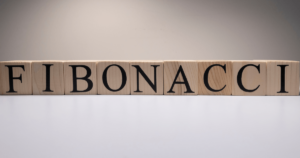Banknotes play a crucial role in our everyday lives as a form of currency. They are not just pieces of paper; they represent the financial backbone of nations. In this blog post, we will delve into the world of banknotes, exploring their definition, significance, and examples from different countries.
What Are Banknotes and How Do They Work?
Banknotes, also known as paper money or bills, are physical notes issued by a country’s central bank or monetary authority. They are legal tender, meaning they are recognized by law as an acceptable form of payment for goods and services.
Unlike coins, banknotes are made of paper or polymer materials and typically feature prominent national symbols, historical figures, or iconic landmarks. Each banknote represents a specific face value, which indicates its monetary worth.
When you possess a banknote, you hold the right to exchange it for goods or services equivalent to its value. The widespread acceptance and trust in banknotes as a medium of exchange make them an integral part of economies worldwide.
The Evolution of Banknotes
The use of banknotes dates back centuries, with their origins traced to ancient Chinese civilizations. Initially, banknotes were backed by precious metals such as gold or silver, which gave them intrinsic value. However, as economies evolved, the backing of banknotes transitioned to the trust and faith placed in the issuing authority.
In modern times, central banks or monetary authorities have the sole authority to issue banknotes. They ensure the security features of banknotes, such as unique designs, watermarks, holograms, and other elements, to prevent counterfeiting.
Diverse Banknotes from Around the World
Every country has its own unique banknotes with distinct designs and features. Let’s explore some examples:
- United States: The US dollar bills, featuring iconic figures like George Washington and Abraham Lincoln, are recognized worldwide.
- United Kingdom: The Bank of England issues banknotes denominated in pounds sterling, showcasing notable figures such as Queen Elizabeth II and historical landmarks.
- Japan: The Japanese yen banknotes depict famous personalities, scenic landscapes, and cultural symbols, reflecting the rich heritage of the country.
- Switzerland: Swiss franc banknotes are renowned for their intricate designs, incorporating elements of Swiss culture, history, and nature.
The Pros and Cons of Banknotes
Like any form of currency, banknotes have their advantages and disadvantages:
Pros:
- Banknotes provide a tangible and portable means of conducting transactions.
- They are widely accepted, ensuring their usability in various settings.
- Banknotes offer privacy and anonymity in transactions.
Cons:
- Banknotes are susceptible to loss, theft, or damage.
- Counterfeiting poses a risk to the integrity of banknotes.
- Handling large amounts of banknotes can be inconvenient and time-consuming.
The Future of Banknotes
As digital payment methods gain popularity, the role of banknotes in our everyday transactions may evolve. However, their significance as a symbol of national identity, trust, and economic stability remains strong.
In conclusion, banknotes are not merely pieces of paper; they represent the financial systems and cultural heritage of nations. Understanding their definition, evolution, and significance is essential for anyone interested in the world of finance and economics.








